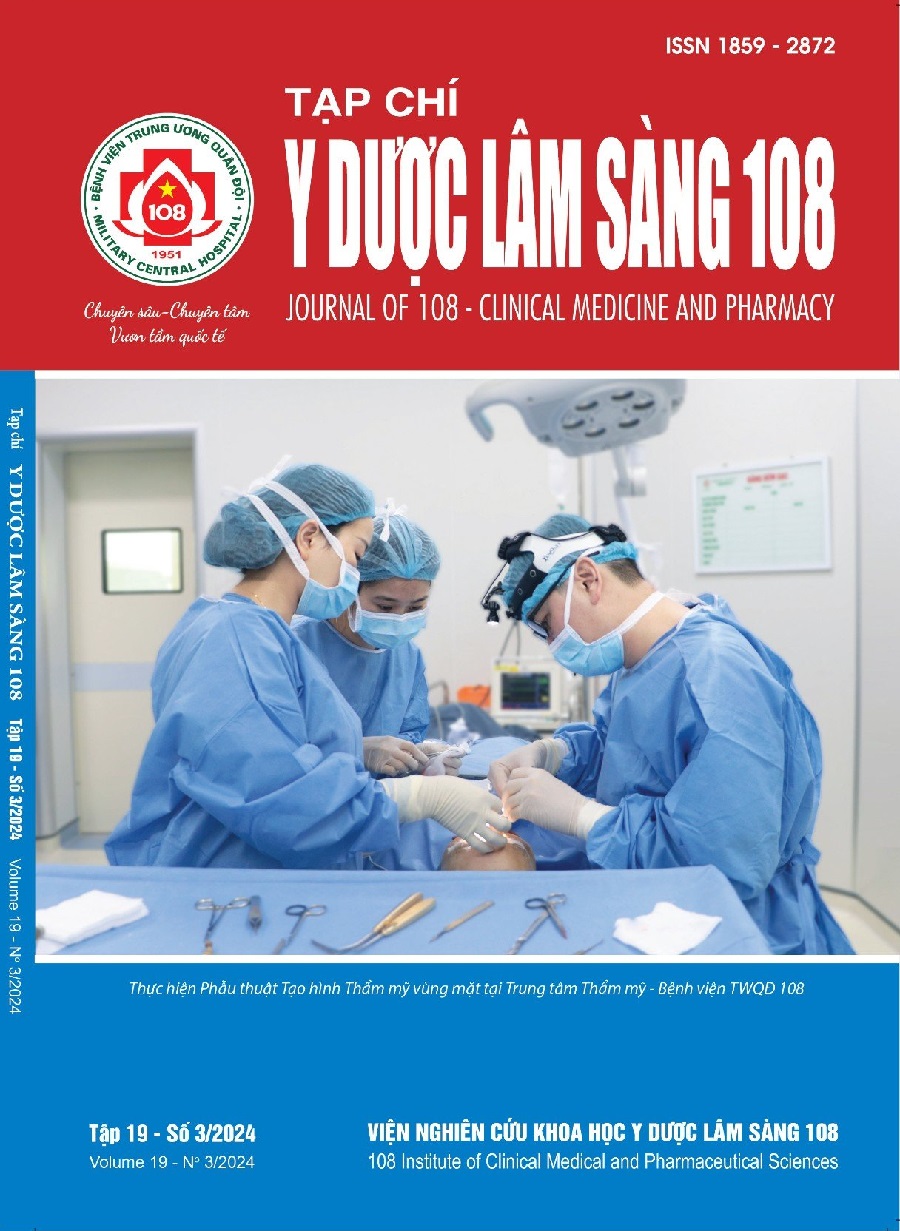Cardio-ankle vascular index and associated factors in patients with chronic coronary artery disease
Main Article Content
Keywords
Abstract
Objective: To investigate the characteristics of the cardio-ankle vascular index (CAVI) and its relationship with some clinical and paraclinical factors in patients with chronic coronary artery disease (CAD) or chronic coronary artery syndrome (according to ESC-2019). Subject and method: A cross-sectional study included 222 inpatients at Duc Giang General Hospital - Hanoi, divided into 2 groups with chronic CAD(+) and control group with CAD(-). Collected information includes: Age, gender, history of cardiovascular risk factors, clinical characteristics, hematological parameters, blood biochemistry, electrocardiography, echocardiography, CAVI results (right and left), and risk of cardiovascular disease according to the Framingham score. Pearson correlation coefficient (r) was used to evaluate the correlation between CAVI and quantitative variables. Result: The mean CAVI of the CAD(+) group was 9.20 ± 0.80, significantly higher than the CAD (-) group which was 8.48 ± 0.63 (p<0.001). CAVI had a weak positive correlation with systolic blood pressure (SBP) (r=0.263, p=0,001), Framingham score (r=0.355, p<0.001), PTP (r=0.214, p=0.007), number of combination of risk factors (r=0.188, p=0.017). CAVI increased significantly in patients with hypertension (9.25 ± 0.77 vs 8.87 ± 0.92, p=0.039). CAVI had weak negavetive correlations with eGFR in the CAD(-) group. Conclusion: The mean CAVI of the CAD(+) group increased higher than the control group. Related factors include SBP, hypertension, Framingham score and number of combination of risk factors.
Article Details
References
2. Takata М, Shimakura А (2009) Principle role of the cardio-ankle vascular index in the assessment of vascular function. From bench to bedside: CAVI as a novel indicator of vascular function: 2-15.
3. Knuuti J, Wijns W, Saraste A et al (2019) 2019 ESC Guidelines for the diagnosis and management of chronic coronary syndromes: The Task Force for the diagnosis and management of chronic coronary syndromes of the European Society of Cardiology (ESC). Eur Heart J 41(3): 417-418.
4. Nghiêm Thu Thảo, Phạm Thị Hồng Thi (2019) Chỉ số tim - mạch cổ chân (CAVI) ở bệnh nhân bệnh động mạch vành tại Bệnh viện Đại học Y Hà Nội. Tạp chí Tim mạch học Việt Nam, (90), tr. 141-147.
5. Shirai M, Song M, Suzuki J et al (2011) Contradictory effects of beta1- and alpha1- aderenergic receptor blockers on cardio-ankle vascular stiffness index (CAVI) - CAVI independent of blood pressure. J Atheroscler Thromb 18(1): 49-55.
6. Shirai K, Utino J, Otsuka K et al (2006) A novel blood pressure-independent arterial wall stiffness parameter; cardio-ankle vascular index (CAVI). J Atheroscler Thromb 13(2): 101-107.
7. Takaki A, Ogawa H, Wakeyama T et al (2008) Cardio-ankle vascular index is superior to brachial-ankle pulse wave velocity as an index of arterial stiffness. Hypertens Res 31(7): 1347-1355.
8. Izuhara M, Shioji K Kadota S et al (2008) Relationship of cardio-ankle vascular index (CAVI) to carotid and coronary arteriosclerosis. Circ J 72(11): 1762-1767.
 ISSN: 1859 - 2872
ISSN: 1859 - 2872
